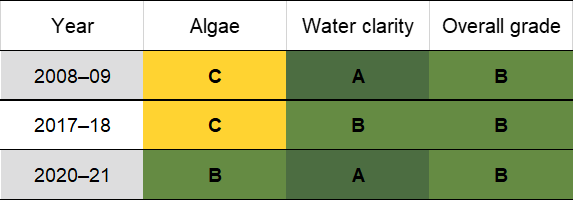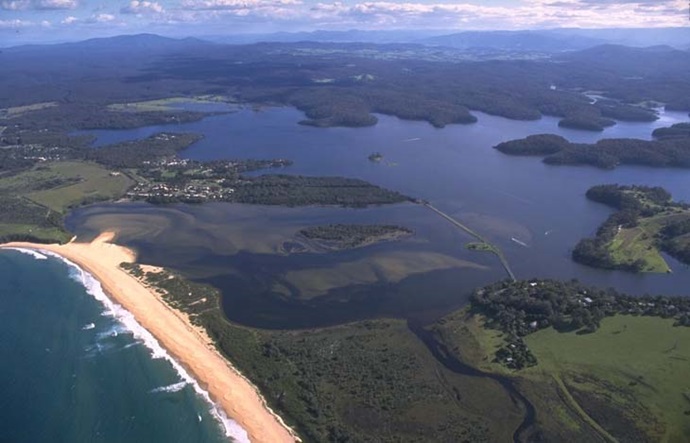Wallaga Lake is located north of the township of Bermagui on the south coast of New South Wales. It is classed as a lake with an intermittently closed entrance.
Dignams Creek and Narira Creek are 2 major tributaries that feed into the lake. The lake supports great biodiversity, including seagrass beds, swamps, saltmarsh and wetlands.
Wallaga Lake is a popular tourist destination as it provides a host of recreational activities in a well-preserved environment. The lake is commercially fished for finfish, prawns and oysters providing one of the largest commercial catches on the south coast. Meads Bay is a significant area within the estuary as it is a fish nursery.





